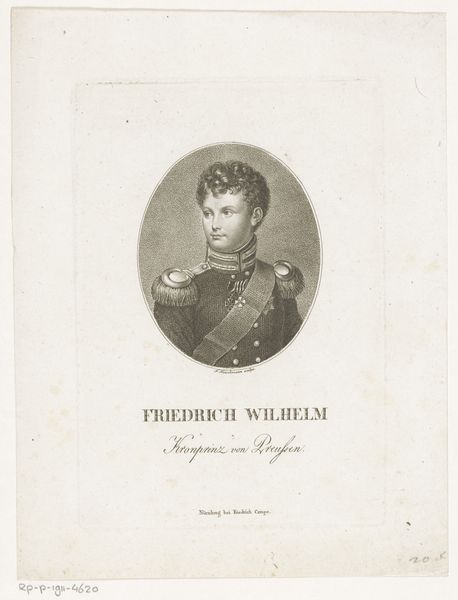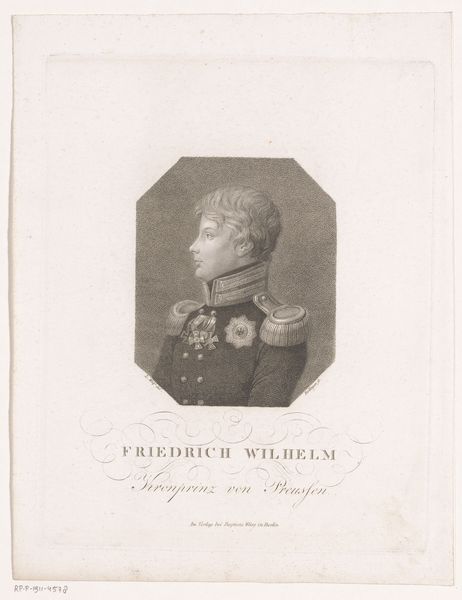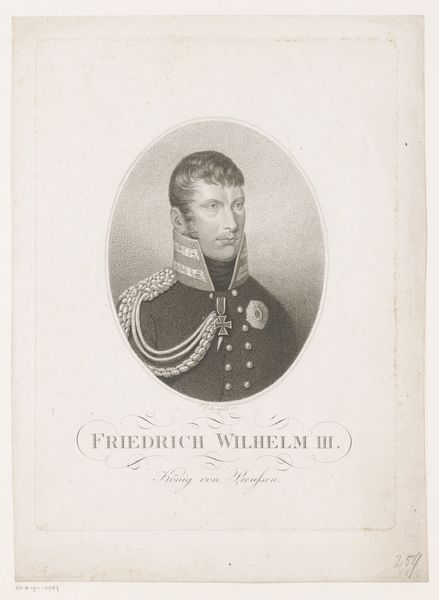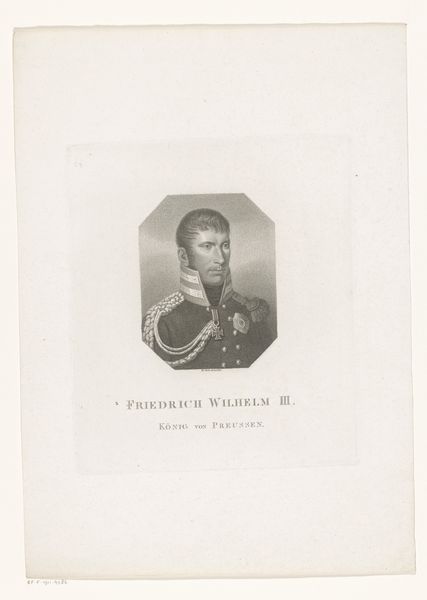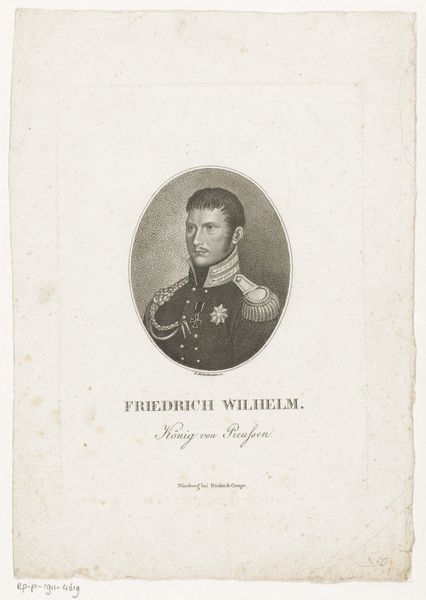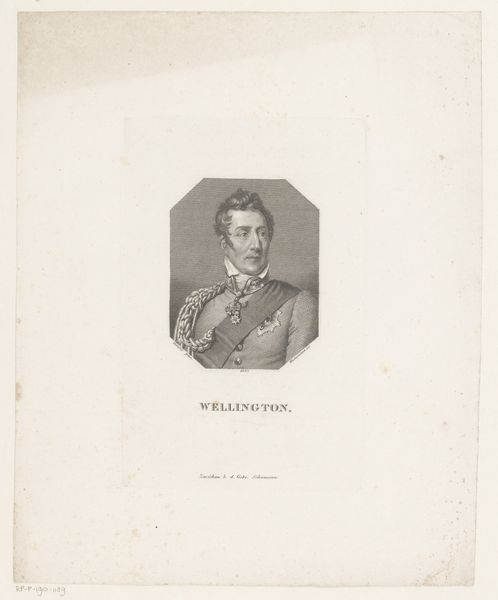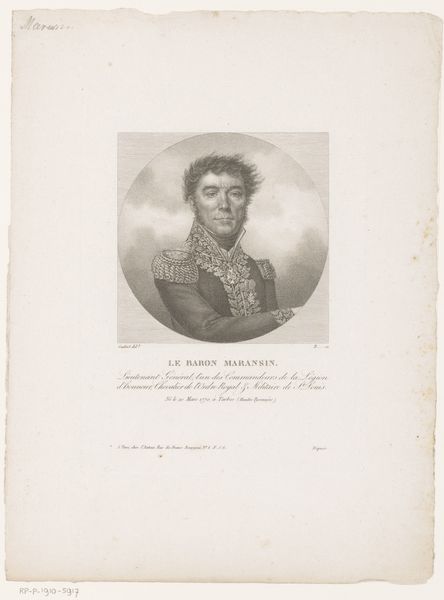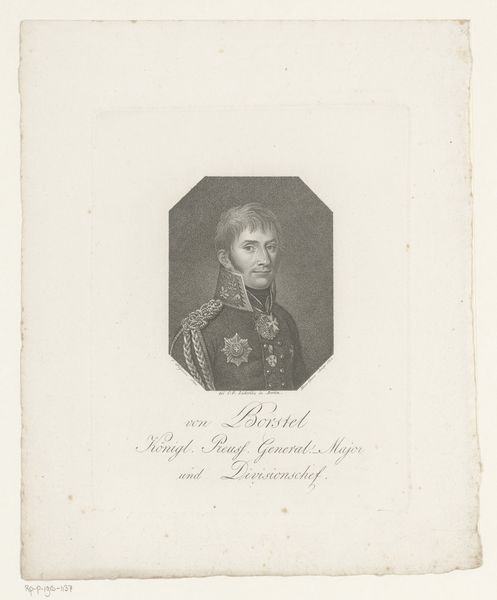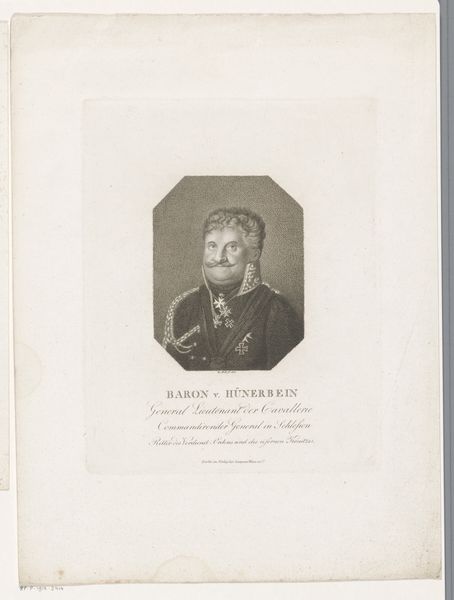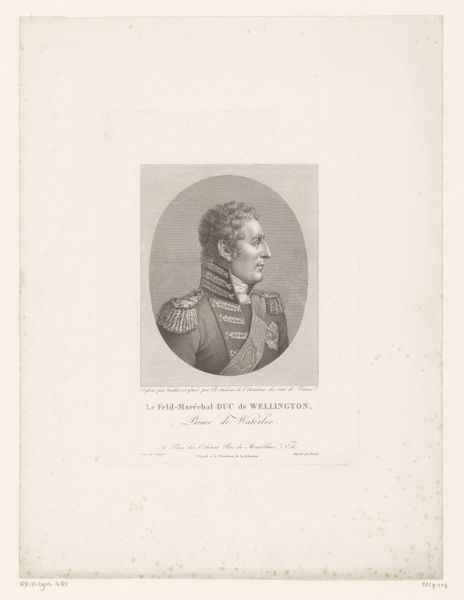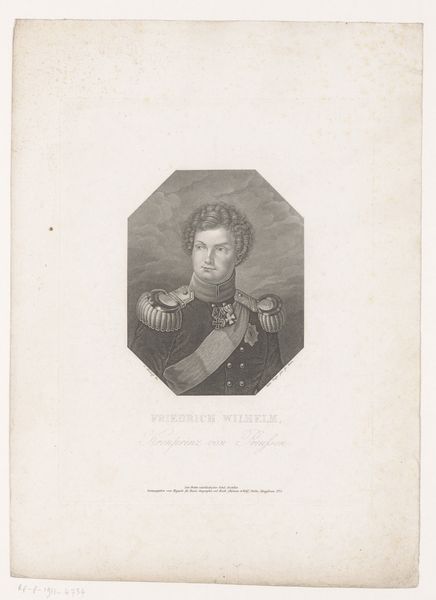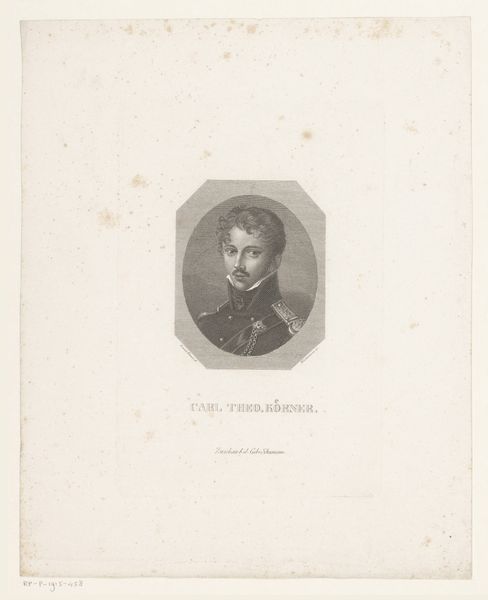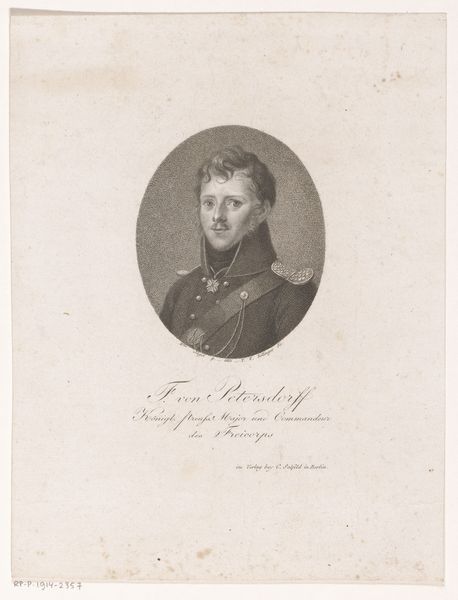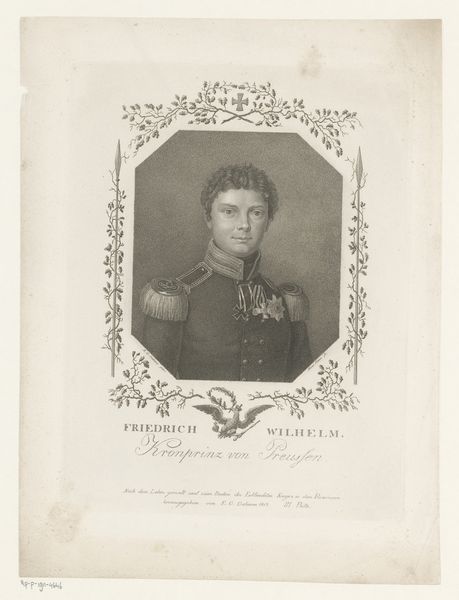
Portret van Friedrich Wilhelm III, koning van Pruisen 1797 - 1825
0:00
0:00
print, engraving
#
portrait
#
neoclacissism
# print
#
engraving
Dimensions: height 231 mm, width 165 mm
Copyright: Rijks Museum: Open Domain
Editor: So here we have a stately engraving by Friedrich Wilhelm Bollinger, dating sometime between 1797 and 1825, titled "Portret van Friedrich Wilhelm III, koning van Pruisen"—or, Portrait of Frederick William III, King of Prussia. He definitely looks like a man of importance. How would you interpret this neoclassical print, in our modern context? Curator: Well, first, let's just say the neoclassical lines are crisp enough to give a geometry lesson. This isn't just a portrait, darling; it's a performance. That carefully crafted seriousness, the meticulous rendering of his uniform… it screams power, doesn't it? Bollinger isn't merely showing us a face; he's selling us an image, an idea of kingship, really. A somewhat stilted one, but potent, all the same. What does it whisper to you? Editor: I suppose it's saying that power is about projecting an image, almost more than any real substance. But it feels distant. Like something embalmed in tradition. Curator: Exactly! And in its own way, that very distance is the point. Remember, Prussia, even then, was trying to project stability amidst turmoil. This isn't some revolutionary rabble-rouser. He’s permanence made portrait. Bollinger wasn’t painting reality; he was etching an ideal. And those medals? The epitome of legitimacy. Editor: That makes a lot of sense! I guess, beyond just "official," I see how it communicates deliberate, manufactured stability. I definitely got the subtext on the medals now. Curator: Precisely. So, next time you see a stiff portrait, darling, ask yourself: What are they really trying to sell us? It's rarely just a likeness, is it?
Comments
No comments
Be the first to comment and join the conversation on the ultimate creative platform.
